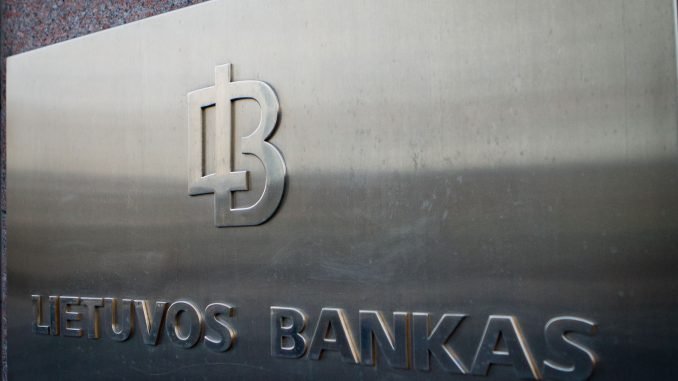
Several months have passed since the Bank of Lithuania’s last forecasts. The latest one, presented by the steward of the financial markets, shows both promising and not-so-good developments. The Bank of Lithuania projections that this year’s gross domestic product (GDP) will be slightly lower than last year’s, while 2024 GDP is expected to grow by 2.1%, Lukrecija Giedraitytė says in lrytas.lt
The economy is estimated to contract by 0.6% this year, lower than the contraction forecast in June (-1.3%), mainly due to increased GDP in the second quarter of 2023.
The activity of the Lithuanian economy is still at a low ebb, and a faster recovery of the Lithuanian economy is postponed until the beginning of next year, assured Gediminas Šimkus, Chairman of the Board of the Bank of Lithuania. “The recovery of the Lithuanian economy is postponed, but not cancelled. It will happen”, he said.
“The shocks of recent years have made the country’s economic development trajectory resemble a roller coaster. A brisk recovery replaced the sharp downward slide at the start of the pandemic, while this year’s downward growth curve is still being pressured by the aftermath of the Russian-induced war and the price shocks. These are taking longer, and the country’s economy will return to a more balanced state of development next year when it is affected by unfavourable economic winds,” the President of the Board of the Bank of Lithuania said.
“Unfortunately, the picture is not good,” is how Šimkus described the updated forecasts for the euro area and the global economy.
According to the Bank of Lithuania representative, the global economy is stagnating, while the euro area growth is slowing down. For Lithuanian manufacturers, this means worse sentiment, falling demand and declining exports.
“Growth forecasts for many regional countries, except the US, are being revised to the downside,” the spokesman added. The outlook for growth in the euro area has been revised down from 1.5% next year to 1%.
How does Lithuania look in this context?
Lithuania’s industrial production this year will be 4.5% lower than a year ago, while domestic trade will be 1.8% lower than a year ago.
As the successes and failures of industry have a significant impact on the national economy, this also has a substantial impact on economic growth and development. According to Mr. Šimkus, orders to companies are staying the same, and the average order book is below average, so no recovery is expected in the coming months.
“The fall of the industry is obvious, but it is important to see the bigger picture, to step back and see more than just one piece of the mosaic,” he assured, adding that industrialists can survive this period with dignity. In the first half of next year, the industry is expected to grow again.
However, the construction and transport sectors are already on a growth path. Construction work is up 7.6% year-on-year. Freight turnover in the transport sector is 9.9% higher than a year ago. This reflects the resilience and competitiveness of the industry.
However, it is noted that these rising setters will not compensate for the fall in other activities.
At the same time, the population’s real incomes grew by 4.8% in the first half of the year. Although personal incomes have been growing faster than prices lately, consumption has been shrinking, and the population has been more inclined to save and keep a closer eye on spending.
Private consumption is expected to be 0.4% lower this year than last year.
With rising real incomes, private consumption will increase by 2.7% next year and contribute to GDP growth.
Tensions are easing
Inflation is declining rapidly as the effects of cheap raw materials and resilient supply chains wear off and will be most affected next year by rising prices of services.
“When inflation took off in uncontrollable spikes, the culprits were easy to find: supply disruptions, global food prices, energy prices. In other words, the environment was the culprit, and I say that without irony. The question is, how are these suspects behaving now?” – he continued.
Tensions are easing. A favourable environment for these factors is foreseen for the coming year.
Turning to the European Central Bank (ECB), he assured the ECB’s monetary policy was effective.
According to the Bank of Lithuania representative, if the ECB maintains the base interest rates, which have already been raised several times, for a sufficiently long time, inflation should fall to the target of 2%.
According to Chairman of the Board of the Bank of Lithuania, there is no need to rush to say that the ECB may start cutting interest rates in the summer of next year.
Next year, based on futures prices, food commodity prices are expected to fall by 3%, oil to stay the same, or even drop in price. The cost of gas should also not be higher than at the end of the year. At the moment, he said, there were no signs that these factors would fuel inflation.
After 18.9% last year, average annual inflation will likely fall to 8.8% and 2.6% next year. The forecast said that inflation is expected to be most affected by the continuing rise in the cost of services.
Rising wages are the primary driver of higher prices for services.
The unemployment rate is close to 6%. According to the Bank of Lithuania, it is no higher than before the shocks of recent years. However, businesses believe the stagnation will only last for a while and are working hard to retain their existing staff. Average wages will be 12.4% higher this year than last year, with another 9.8% increase expected next year.
With real incomes rising, personal consumption is also expected to increase next year. The labour market also provides the preconditions for this, with lower unemployment and higher wage forecasts. The Bank of Lithuania also expects wages to grow faster than prices and real incomes to increase.
However, wages are growing slower in manufacturing, trade and real estate activities, and the number of people in employment is falling.


Be the first to comment